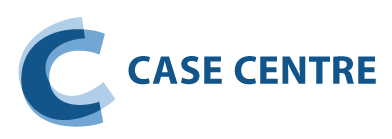


- Not connected
- |
- Login

Can One Size Fit All? The Case of ACEM and Community Credit

- English
- Social impact,
- Scaling,
- Microfinance,
- Community credit,
- Not-for-profit
This case study focuses on the Montreal Community Loan Fund (ACEM), which fights poverty and exclusion through the administration of community credit. More specifically, ACEM provides training and offers loans to marginalized and vulnerable people for pre-start-up, start-up, and consolidation of businesses. The case describes ACEM’s recent history and how the organization long chose to increase the scale of community credit services through collaborations and partnerships, avoiding for decades the need to grow its own organization. In 2012, ACEM broke with tradition and launched its own scaling process to double its size.
The case thus describes an organization trying to stay focused on its social mission and core values while ensuring its own financial stability and protecting the interests of the network of independent community credit organizations that it co-founded. It thus provides an opportunity to discuss the variants of scaling and the challenges faced by a growing not-for-profit organization.
The case ends by describing a dilemma regarding ACEM’s financial instability. Students will be asked to make a decision regarding the current scaling process and propose a sustainable model that will make ACEM less dependent on government grants while respecting its core values.
- Banking and financial services
The purpose of this case study is to investigate the potential social impact of the financial industry, particularly in terms of alternative approaches such as microfinancing. The case also teaches the concept of scaling and its variations (up, out, and deep) as well as its potential application within community-rooted and not-for-profit organizations.
This case presents an opportunity to expose students to the practices of microfinance institutions and how they address social issues.
This case also familiarizes students with key issues related to the scaling of not-for-profit organizations. Using the example of ACEM, the instructor will discuss how not-for-profit organizations evaluate scaling opportunities and the challenges they represent. The three specific teaching objectives are as follows:
- expose students to the potential social impact of financial institutions and alternative models such as microfinancing;
- develop students’ ability to evaluate scaling opportunities by assessing risks and benefits;
- develop students’ ability to make decisions on behalf of not-for-profit organizations.
Scaling up, out, and deep


